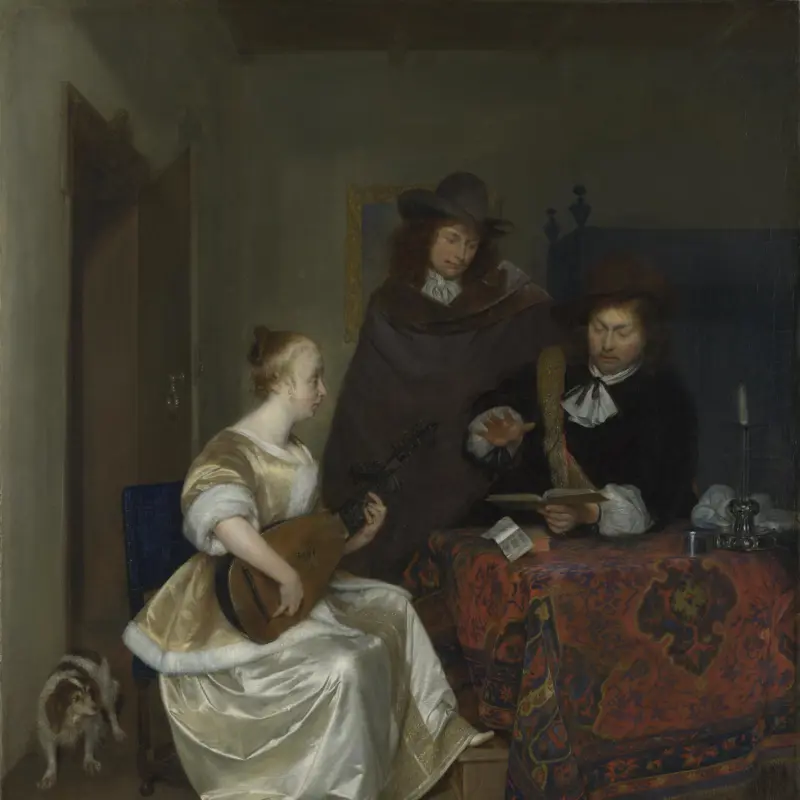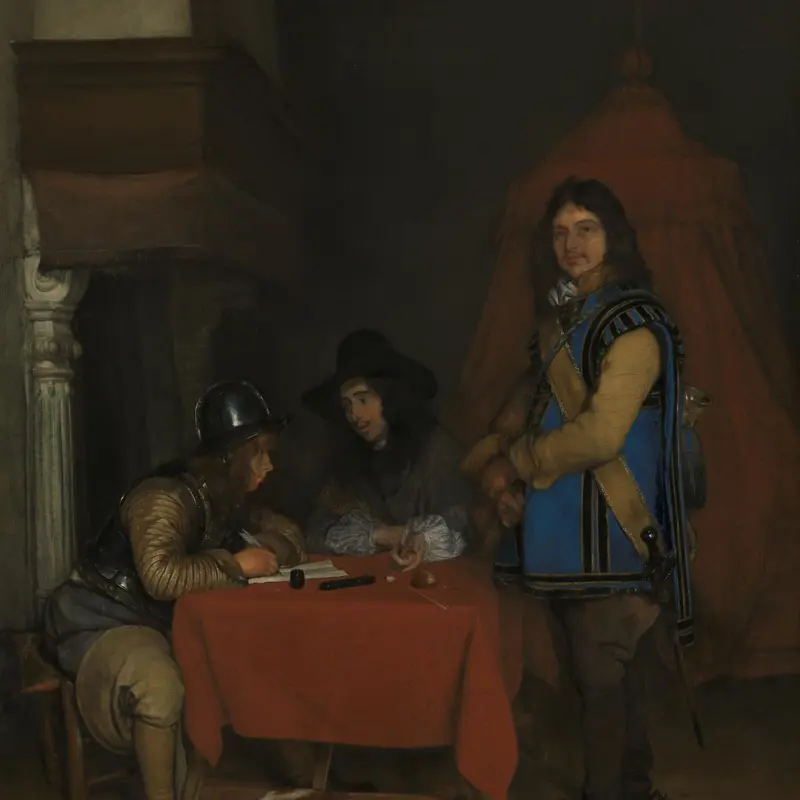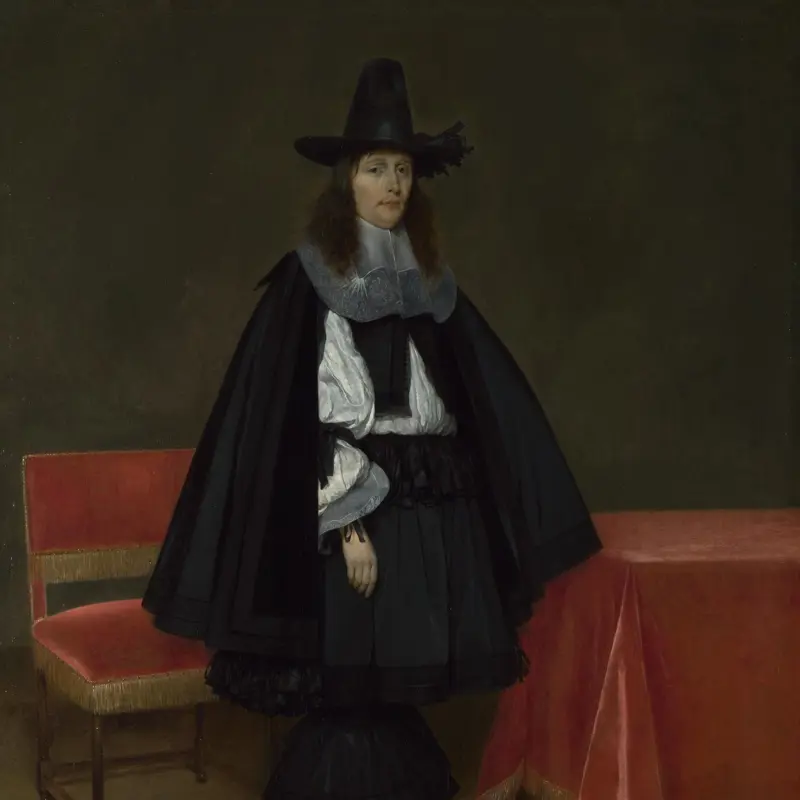Gerard ter Borch, 'Portrait of Hermanna van der Cruis', about 1665-9
About the work
Overview
This serious-looking woman is Hermanna van der Cruis. She was married to Abraham van Suchtelen, who held many posts in national and local government in the Netherlands. The portrait was probably made in the second half of the 1660s, when Hermanna was about 50, a wealthy widow and respected in the upper circles of local society.
Ter Borch had introduced this type of full-length, small-scale portrait in the 1640s while travelling and painting in many parts of Europe. By setting figures against a dark, unfussy background and by using strong blocks of colour to contrast with the black and white clothing that was fashionable at the time, he created arresting compositions highlighting what was important to his clients: the sitters' faces and how they were dressed. Ter Borch was particularly admired for his ability to capture the soft textures of expensive gauze, satin and velvet such as we see here.
Key facts
Details
- Full title
- Portrait of Hermanna van der Cruis
- Artist
- Gerard ter Borch
- Artist dates
- 1617 - 1681
- Date made
- about 1665-9
- Medium and support
- oil on canvas
- Dimensions
- 71.9 × 57.7 cm
- Acquisition credit
- Bequeathed by Sir Otto Beit, 1931
- Inventory number
- NG4596
- Location
- Not on display
- Collection
- Main Collection
Provenance
Additional information
Text extracted from the ‘Provenance’ section of the catalogue entry in Neil MacLaren, revised and expanded by Christopher Brown, ‘National Gallery Catalogues: The Dutch School: 1600–1900’, London 1991; for further information, see the full catalogue entry.
Bibliography
-
1913W. von Bode, Catalogue of the Collection of Pictures and Bronzes in the Possession of Mr. Otto Beit, London 1913
-
1932National Gallery, National Gallery: Trafalgar Square and Millbank Directors' Reports, 1931, London 1932
-
1960Maclaren, Neil, National Gallery Catalogues: The Dutch School, 2 vols, London 1960
-
1991Maclaren, Neil, revised by Christopher Brown, National Gallery Catalogues: The Dutch School, 1600-1900, 2nd edn (revised and expanded), 2 vols, London 1991
-
2001
C. Baker and T. Henry, The National Gallery: Complete Illustrated Catalogue, London 2001
About this record
If you know more about this work or have spotted an error, please contact us. Please note that exhibition histories are listed from 2009 onwards. Bibliographies may not be complete; more comprehensive information is available in the National Gallery Library.




